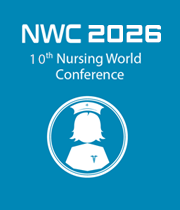Title : Groin Dressing post cardiac catheterization: Traditional Pressure vs Transparent Film
Abstract:
Introduction:
Transfemoral percutaneous coronary procedures have evolved in the past several years as a mainstay in both diagnostic and interventional cardiology however, safe management of vascular access sites after removal of percutaneous catheters remains a serious concern. Post cardiac catheterization puncture site care is usually done with a tight pressure dressing in many institutions due to the belief that it should prevent the bleeding. This practice is uncomfortable to the patients. Nurses have also described difficulty in assessing the sheath insertion site in the groin when pressure dressing is in place. A new way of dressing using transparent film dressing (TFD) has approved and rated better with regard to: comfort, less pain, decrease hematoma formationand facilitates nurse’s assessment of puncture wound site after femoral sheath removal.
Purpose of the study:
To determine the efficacy of using a small transparent non pressure dressing compared with the traditional controlled pressure dressing applied to the femoral artery puncture wound site to maintain hemostasis following cardiac catheterization procedures.
Methodology:
Design: Experimental, Randomized Controlled Trial (RCT).
Setting: Tertiary University Hospital, Kingdom of Saudi Arabia (KSA).
Patients: 80 post cardiac catheterization patients were randomized to have their groins dressed either with pressure dressing (N = 40) or Transparent Film Dressing (N = 40). Patients ambulated 8 hours after the procedures. Outcome variables were hematoma formation or bleeding, patient discomfort, and nurse-reported ease of observation of the groin puncture site after the procedure. Five instruments were used for data collection: 1) Demographic and medical data sheet, 2) Hematoma Formation and Bleeding Scale, 3) Skin Integrity Scale, 4) Patient Discomfort and Pain Scale & 5) Nurses Ease of Assessment Scale.
Results:
Results of the study showed that 100% in TFD group vs. 55% in pressure dressing group reported feeling very comfortable (p value of 0.003). Hematoma formation was equal in the two dressing groups with no incidence of bleeding complications. Nurses rated the ease of assessing the groin significantly higher for TFD than for pressure dressings (p value of 0.000).
Conclusion:
Dressing of the puncture site after cardiac catheterization with TFD was more comfortable than the conventional pressure dressing without any difference in hematoma or bleeding complications. So TFD can be used safely and comfortably after achieving hemostasis.



